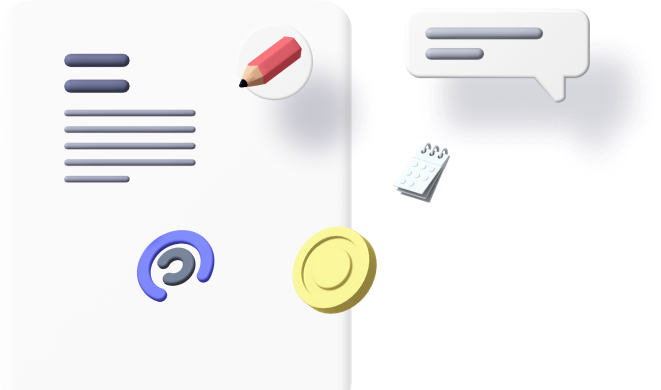
Are you drowning in administrative tasks while your competitors close deals? Real estate automation is no longer a luxury—it’s a necessity for agents who want to thrive in today’s competitive market. In fact, successful agents are leveraging technology to handle repetitive tasks, freeing up valuable time for what matters most: building relationships and closing deals.
Moreover, this comprehensive guide will reveal seven powerful ways to implement real estate automation in your business. Additionally, you’ll discover how to streamline workflows, boost productivity, and reclaim precious hours in your day. Furthermore, by the end of this article, you’ll have a clear roadmap to transform your real estate operations from chaotic to systematic.
Why Real Estate Automation Matters
The real estate industry is experiencing a digital revolution, and the statistics are compelling. According to the National Association of Realtors, agents who use automation tools report a 30% increase in productivity and a 25% boost in lead conversion rates. Furthermore, these same professionals save an average of 10 hours per week on administrative tasks.
However, the benefits extend beyond time savings. Additionally, automated systems reduce human error by up to 75%, ensuring consistent communication with clients. Moreover, automated follow-up sequences can increase client retention rates by 40%. Consequently, agents who embrace real estate automation are not just working smarter—they’re building more sustainable and profitable businesses.
Meanwhile, the global real estate software market is projected to reach $12.9 billion by 2025, indicating that automation tools are becoming industry standard rather than optional extras.
7 Ways to Implement Real Estate Automation
1. Automated Lead Nurturing and Follow-Up Systems
First and foremost, implementing automated lead nurturing transforms how you manage prospects. Instead of manually tracking every lead, automation systems can segment contacts based on their interests, budget, and timeline. For instance, AI chatbots for real estate can qualify leads 24/7, ensuring no opportunity slips through the cracks.
Additionally, automated email sequences can deliver targeted content to different buyer personas. For example, first-time homebuyers receive educational content about the mortgage process, while luxury buyers get updates on high-end market trends. Furthermore, this personalized approach increases engagement rates by up to 60% compared to generic communications.
2. Smart Listing Management and Marketing Automation
Subsequently, automated listing distribution saves countless hours of manual posting. Modern systems can simultaneously publish your listings across multiple MLS platforms, Zillow, Trulia, and social media channels with just one click. Moreover, these tools can automatically update listing information across all platforms when changes occur.
In addition, automated social media marketing tools can schedule property posts, create virtual tours, and even generate listing descriptions using AI technology. Consequently, your properties gain maximum exposure without requiring constant manual intervention.
3. Streamlined Transaction Management
Furthermore, transaction management automation eliminates the chaos of paperwork and deadlines. Digital transaction platforms can automatically send reminders for important dates, request necessary documents, and track completion status. Additionally, these systems integrate with AI chatbot solutions to keep all parties informed throughout the process.
Moreover, automated contract management ensures all required signatures are collected efficiently. Electronic signature platforms can send documents to the right people at the right time, reducing closing delays by an average of 7 days.
4. Intelligent Client Communication Systems
Meanwhile, automated communication systems ensure consistent client touchpoints without overwhelming your schedule. These tools can send birthday wishes, anniversary messages, and market updates based on predetermined schedules. Additionally, they can trigger specific messages based on client behavior, such as sending financing information when someone views homes above a certain price point.
Furthermore, integration with real estate chatbot platforms enables 24/7 client support. Clients can ask questions, schedule showings, and receive instant responses even when you’re unavailable.
5. Automated Market Analysis and Reporting
In addition, market analysis automation provides valuable insights without manual research. These systems can automatically generate Comparative Market Analyses (CMAs), track price changes in specific neighborhoods, and alert you to new opportunities. Moreover, automated reporting keeps clients informed about market conditions affecting their properties.
Consequently, you can provide data-driven advice more efficiently while positioning yourself as a market expert. Automated reports can be customized for different client types and delivered on scheduled intervals.
6. Calendar and Appointment Management Automation
Similarly, automated scheduling eliminates phone tag and streamlines appointment booking. Clients can view your availability and book showings directly through your website or chatbot interface. Additionally, the system can automatically send confirmation messages, directions, and preparation checklists.
Moreover, intelligent scheduling can optimize your route planning, grouping appointments by location to maximize efficiency. Buffer times are automatically included to account for travel and unexpected delays.
7. Financial and Commission Tracking Systems
Finally, automated financial tracking provides real-time insights into your business performance. These systems can track commission splits, calculate taxes, and generate financial reports automatically. Furthermore, integration with accounting software ensures accurate record-keeping for tax purposes.
Additionally, automated expense tracking can categorize business expenses and maintain digital receipts. This functionality is particularly valuable during tax season when detailed records are essential.
Common Real Estate Automation Mistakes to Avoid
Despite the benefits, several pitfalls can derail your automation efforts. First, over-automation can create impersonal experiences that alienate clients. Therefore, maintain a balance between efficiency and personal touch—automated systems should enhance relationships, not replace them.
Second, failing to customize automated messages makes communications feel generic. Instead, ensure your automated emails and texts reflect your brand voice and contain relevant, personalized information.
Third, neglecting to monitor and update automated systems can lead to outdated information being distributed. Consequently, establish regular review schedules to keep all automated content current and accurate.
Finally, implementing too many automation tools simultaneously can overwhelm your workflow. Moreover, start with one or two key areas and gradually expand your automation ecosystem as you become comfortable with each tool.
Benefits and ROI of Real Estate Automation
The return on investment for real estate automation is substantial and measurable. Primarily, agents report saving 10-15 hours per week on administrative tasks, allowing them to focus on revenue-generating activities. Additionally, this time savings translates to handling 30-50% more clients without increasing stress levels.
Furthermore, automated lead nurturing increases conversion rates by maintaining consistent contact with prospects. Studies show that automated follow-up sequences can improve lead-to-client conversion by up to 40%. Moreover, the improved response times from AI chatbot implementations increase client satisfaction scores significantly.
Additionally, automated systems reduce operational costs by minimizing manual labor requirements. The typical agent sees a 25-30% reduction in administrative expenses within six months of implementation. Consequently, the investment in automation tools typically pays for itself within 3-6 months through improved efficiency and increased sales volume.
Conclusion
Real estate automation represents a fundamental shift in how successful agents operate their businesses. By implementing these seven automation strategies, you’ll streamline operations, improve client experiences, and create more predictable income streams. Moreover, the time savings and efficiency gains provide competitive advantages that compound over time.
Remember, automation should enhance your personal service, not replace it. Therefore, start with one area that causes the most frustration in your current workflow, then gradually expand your automation toolkit.
Ready to transform your real estate business? Contact us today to discover which automation solutions align best with your specific needs and goals. Don’t let manual processes hold you back from achieving your full potential.
Frequently Asked Questions
What is real estate automation and how does it work?
Real estate automation uses software tools to handle repetitive tasks like lead follow-up, listing distribution, and client communication. These systems work by setting predefined rules and triggers that execute actions automatically, freeing agents to focus on high-value activities.
How much does real estate automation cost?
Real estate automation costs vary from $50-$500 per month depending on features needed. However, most agents see positive ROI within 3-6 months through time savings and increased productivity. Basic CRM automation starts around $50/month, while comprehensive platforms range $200-$500/month.
Can real estate automation replace human agents?
No, real estate automation enhances agent capabilities rather than replacing them. While automation handles administrative tasks and initial lead qualification, human expertise remains essential for negotiations, complex problem-solving, and building trust with clients.
Which real estate tasks should I automate first?
Start with lead follow-up and email marketing automation, as these provide immediate time savings and improved conversion rates. Subsequently, consider automating listing distribution and social media posting. Finally, implement transaction management and reporting automation as your comfort level increases.
















